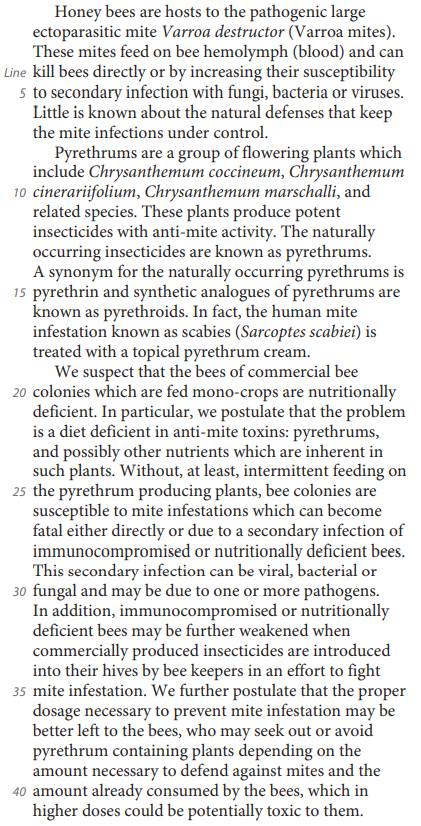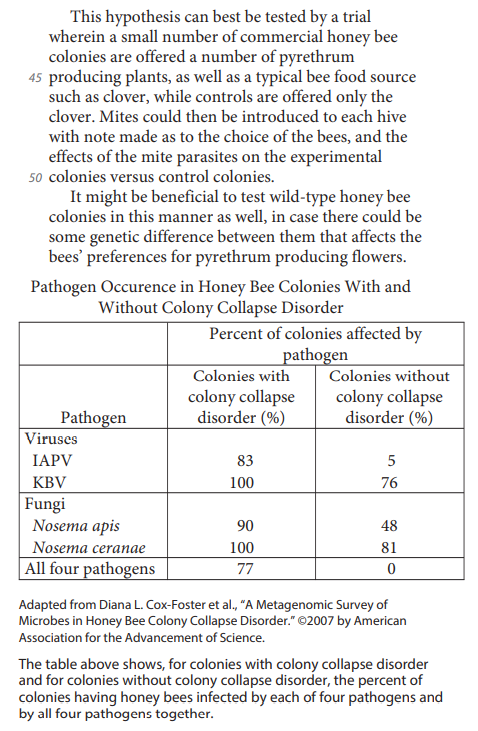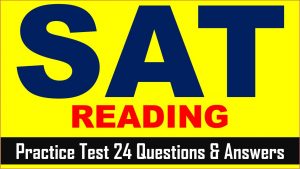SAT (Scholastic Assessment Test) is a standard test, used for taking admission to undergraduate programs of universities or colleges of the United States. SAT is developed and published by the College Board, an organization in the United States, administered by the Educational Testing Service. In this article of AKVTutorials, you will get Kaplan SAT Classes Course Book Review | Practice Test 15 AMBiPi.
Kaplan SAT Classes Course Book Review
For every test prep of all kinds, Kaplan is one of the best sources for the preparation test specially for SAT prep exam. On the basis of several factors of course like chapter concepts and practice tests etc. we are going to write a review about Kaplan SAT Prep plus course.
Check Price On Amazon
Kaplan SAT Prep plus book is aligned with SAT latest pattern and convers all the concepts and strategies to clear SAT exam.
This Kaplan SAT Prep Plus Book contains
- Five full length practice tests
- Two tests are in the book and remaining three tests are available on Kaplan official website.
- A set of practice questions at the starting of each chapter.
- Conceptual test after every chapter to evaluate yourself what you have learned.
- Expert scoring analysis and explanation of SAT practice tests.
Kaplan SAT Strategies
- Kaplan’s SAT “On Test Day” strategy notes in helps you SAT Math formulas at one place from where you can learn before the exam.
- Kaplan’s SAT “Reflect” pages helps you to evaluate your understanding level of topics after completing each chapter.
- Kaplan’s SAT “Online study planning” tool helps you target your preparation level.
SAT Reading Practice Passage
This passage is adapted from Richard J. Sharpe and LisaHeyden, “Honey Bee Colony Collapse Disorder is Possibly Caused by a Dietary Pyrethrum Deficiency.” ©2009 by Elsevier Ltd. Colony collapse disorder is characterized by the disappearance of adult worker bees from hives.


SAT Reading Comprehension Practice Test Questions
SAT Practice Test 15 Question No 1
How do the words “can,” “may,” and “could” in the third paragraph (lines 19-41) help establish the tone of the paragraph?
Option A: They create an optimistic tone that makes clear the authors are hopeful about the effects of their research on colony collapse disorder.
Option B: They create a dubious tone that makes clear the authors do not have confidence in the usefulness of the research described.
Option C: They create a tentative tone that makes clear the authors suspect but do not know that their hypothesis is correct.
Option D: They create a critical tone that makes clear the authors are skeptical of claims that pyrethrums are inherent in mono-crops.
SAT Practice Test 15 Answer No 1
Show/Hide Answer
Option C :
When discussing problems with bee colonies, the authors use phrases like “we suspect” (line 19) and “we postulate” (line 21) to show they are hypothesizing reasons for bee colonies’ susceptibility to mite infestations. The use of “can,” “may,” and “could” creates a tentative tone and provides further evidence that the authors believe, but are not certain, that their hypothesis is correct.
Choices A, B, and D are incorrect because the authors’ use of “can,” “may,” and “could” does not create an optimistic, dubious, or critical tone.
SAT Practice Test 15 Question No 2
In line 42, the authors state that a certain hypothesis “can best be tested by a trial.” Based on the passage, which of the following is a hypothesis the authors suggest be tested in a trial?
Option A: Honeybees that are exposed to both pyrethrums and mites are likely to develop a secondary infection by a virus, a bacterium, or a fungus.
Option B: Beekeepers who feed their honeybee colonies a diet of a single crop need to increase the use of insecticides to prevent mite infestations.
Option C: A honeybee diet that includes pyrethrums results in honeybee colonies that are more resistant to mite infestations.
Option D: Humans are more susceptible to varroa mites as a result of consuming nutritionally deficient food crops.
SAT Practice Test 15 Answer No 2
Show/Hide Answer
Option C :
In lines 24-28, the authors hypothesize that bee colonies will be susceptible to mite infestations if they do not occasionally feed on pyrethrum-producing plants. In lines 42-46, they suggest creating a trial where a “small number of commercial honey bee colonies are offered several pyrethrum producing plants” to test their hypothesis.
Choices A, B, and D are incorrect because the authors do not hypothesize that honeybees’ exposure to both pyrethrums and mites will cause the honeybees to develop secondary infections, that beekeepers should increase their use of insecticides, or that humans are more susceptible to varroa mites.
SAT Practice Test 15 Question No 3
Which choice provides the best evidence for the answer to the previous question?
Option A: Lines 3-5 (“These mites… viruses”)
Option B: Lines 16-18 (“In fact… cream”)
Option C: Lines 19-21 (“We suspect… deficient”)
Option D: Lines 24-28 (“Without… bees”)
SAT Practice Test 15 Answer No 3
Show/Hide Answer
Option D :
In lines 24-28, the authors provide evidence that a bee colony may be more resistant to mite infections if the bees eat pyrethrums because this diet may help prevent bees from becoming “immunocompromised or nutritionally deficient.” In lines 42-50, the authors suggest testing this hypothesis in a trial on honeybees.
Choices A, B, and C do not describe any of the authors’ hypotheses.
SAT Practice Test 15 Question No 4
The passage most strongly suggests that beekeepers’ attempts to fight mite infestations with commercially produced insecticides have what unintentional effect?
Option A: They increase certain mite populations.
Option B: They kill some beneficial forms of bacteria.
Option C: They destroy bees’ primary food source.
Option D: They further harm the health of some bees.
SAT Practice Test 15 Answer No 4
Show/Hide Answer
Option D :
The authors explain that when beekeepers use commercially produced insecticides to fight mite infections, they may “further weaken” bees that are “immunocompromised or nutritionally deficient” (lines 31-35).
Choices A, B, and C are incorrect because the authors do not suggest that beekeepers’ use of commercially produced insecticides increases mite populations, kills bacteria, or destroys bees’ primary food source.
SAT Practice Test 15 Question No 5
Which choice provides the best evidence for the answer to the previous question?
Option A: Lines 1-2 (“Honey bees… mites”)
Option B: Lines 6-7 (“Little… control”)
Option C: Lines 31-35 (“In addition… infestation”)
Option D: Lines 47-50 (“Mites… control colonies”)
SAT Practice Test 15 Answer No 5
Show/Hide Answer
Option C :
In lines 31-35, the authors provide evidence that beekeepers’ use of commercially produced insecticides may cause further harm to “immunocompromised or nutritionally deficient bees.
Choices A, B, and D are incorrect because they do not provide the best evidence that beekeepers’ use of commercially produced insecticides may be harmful to bees; choices A, B, and D focus on mite infestations’ impact on honeybees.
SAT Practice Test 15 Question No 6
As used in line 35, “postulate” most nearly means to
Option A: make an unfounded assumption.
Option B: put forth an idea or claim.
Option C: question a belief or theory.
Option D: conclude based on firm evidence.
SAT Practice Test 15 Answer No 6
Show/Hide Answer
Option B :
In lines 31-35, the authors argue that beekeepers’ use of insecticides to control mite infestations may be harmful to some bees. The authors then state, “We further postulate that the proper dosage necessary to prevent mite infestation may be better left to the bees” (lines 35-37). In this context, the authors “postulate,” or put forth the idea that the bees may naturally control mite infestations better than insecticides.
Choices A, C, and D are incorrect because in this context, “postulate” does not mean to make an unfounded assumption, question a belief or theory, or conclude based on firm evidence.
SAT Practice Test 15 Question No 7
The main purpose of the fourth paragraph (lines 42-50) is to
Option A: summarize the results of an experiment that confirmed the authors’ hypothesis about the role of clover in the diets of wild-type honeybees.
Option B: propose an experiment to investigate how different diets affect commercial honeybee colonies’ susceptibility to mite infestations.
Option C: provide a comparative nutritional analysis of the honey produced by the experimental colonies and by the control colonies.
Option D: predict the most likely outcome of an unfinished experiment summarized in the third paragraph (lines 19-41).
SAT Practice Test 15 Answer No 7
Show/Hide Answer
Option B :
In the fourth paragraph, the authors propose a trial to study if honeybees’ consumption of pyrethrum producing plants helps the honeybees defend against mite infestations. In the experiment, the authors plan to offer honey bee colonies both pyrethrum producing plants and “a typical bee food source such as clover” to determine if these different diets affect the bees’ susceptibility to mite infestations.
Choices A, C, and D are incorrect because the main purpose of the fourth paragraph is not to summarize the results of an experiment, provide a comparative nutritional analysis, or predict an outcome of an unfinished experiment.
SAT Practice Test 15 Question No 8
An unstated assumption made by the authors about clover is that the plants
Option A: do not produce pyrethrums.
Option B: are members of the Chrysanthemum genus.
Option C: are usually located near wild-type honeybee colonies.
Option D: will not be a good food source for honeybees in the control colonies.
SAT Practice Test 15 Answer No 8
Show/Hide Answer
Option A :
In lines 43-45, the authors propose a scientific trial in which honeybees are “offered several pyrethrum producing plants, as well as a typical bee food source such as clover.” Since the authors contrast the “pyrethrum producing plants” with clover, a “typical bee food source,” it can be assumed that clover does not produce pyrethrums.
Choice B is incorrect because it is stated in the passage. Choices C and D are incorrect because they are not assumptions made by the authors.
SAT Practice Test 15 Question No 9
Based on data in the table, in what percent of colonies with colony collapse disorder were the honeybees infected by all four pathogens?
Option A: 0 percent
Option B: 77 percent
Option C: 83 percent
Option D: 100 percent
SAT Practice Test 15 Answer No 9
Show/Hide Answer
Option B :
The table shows that 77 percent of the honeybee colonies with colony collapse disorder were infected by all four pathogens.
Choices A, C, and D are incorrect because they do not identify the percent of honeybee colonies with colony collapse disorder that was infected by all four pathogens as based on data in the table.
SAT Practice Test 15 Question No 10
Based on data in the table, which of the four pathogens infected the highest percentage of honeybee colonies without colony collapse disorder?
Option A: IAPV
Option B: KBV
Option C: Nosema apis
Option D: Nosema ceranae
SAT Practice Test 15 Answer No 10
Show/Hide Answer
Option D :
The table shows that 81 percent of colonies without colony collapse disorder were affected by the pathogen Nosema ceranae.
Choices A, B, and C are incorrect because they do not identify the pathogen that infected the highest percentage of honeybee colonies without colony collapse disorder as based on data in the table.





